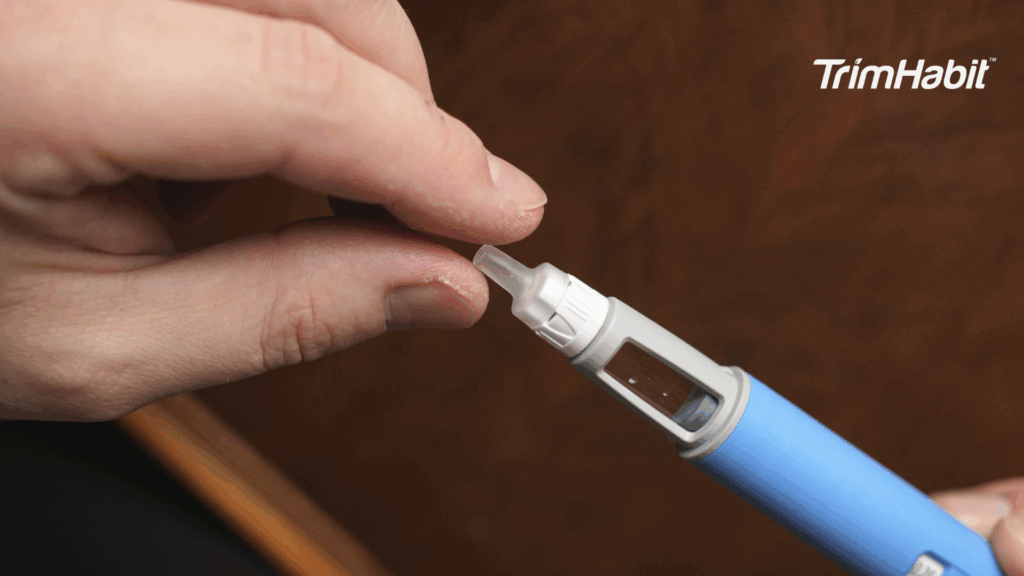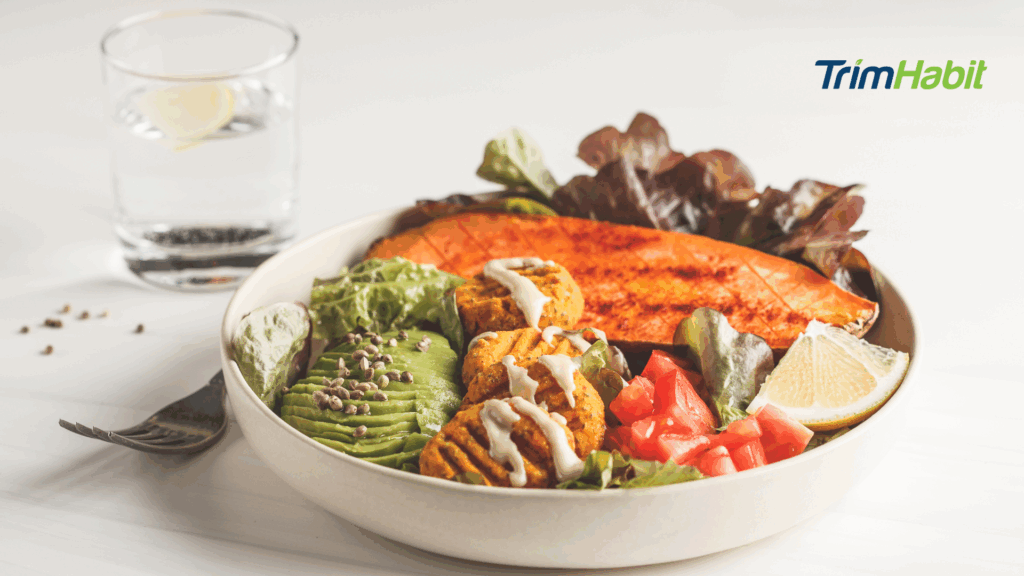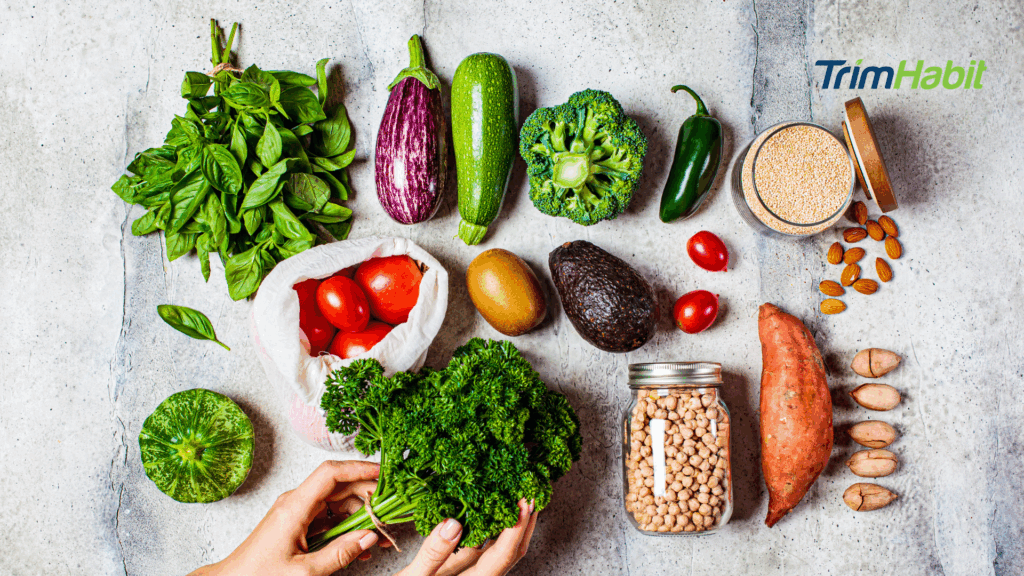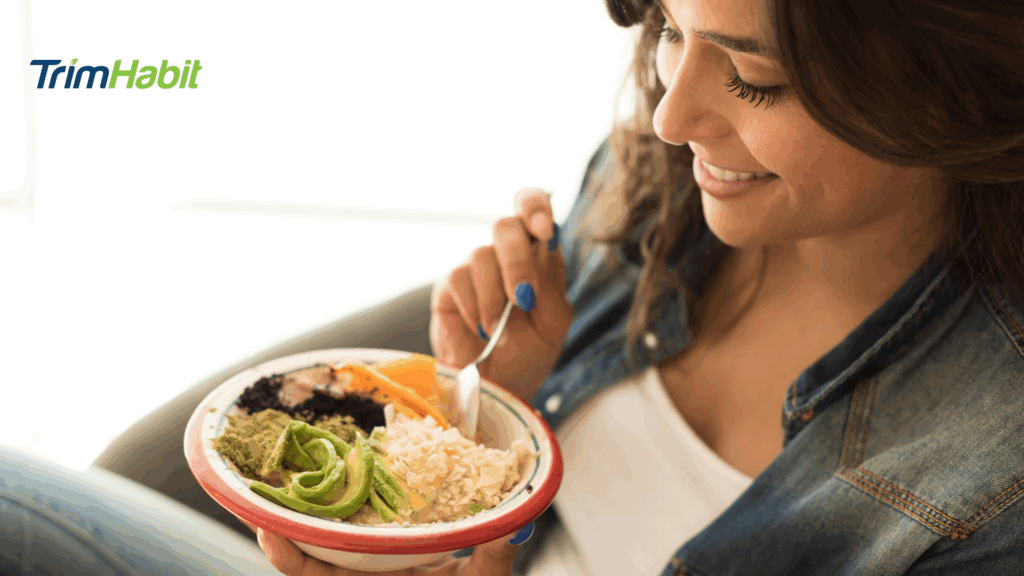Embarking on a healthier, fitter journey involves more than just calorie counting and intense workouts. It’s about making mindful choices in every aspect of your life, including the seemingly innocent snacks you reach for between meals.
Sure, the idea of anti-inflammatory snacks might not immediately light up the excitement in your eyes, but trust that there’s a whole world of goodness waiting to be explored in those tiny bites.
Let’s dive into the 20 best low-inflammation snack foods for weight loss and unveil their untapped potential for managing hunger and fostering a vibrant, healthy lifestyle.
The Role Of Inflammation
Before delving into the diverse options for anti-inflammatory snacks, it’s crucial to grasp the concept of inflammation in the body.
Inflammation is a vital and complex physiological response that the body initiates as a defense mechanism against harmful stimuli. Its primary role is to protect and repair tissues that have been damaged by injury, infection, or other threats1. Here are the critical roles of inflammation:
Defense Against Infection
- Inflammation is the body’s immediate response to infections caused by bacteria, viruses, fungi, or parasites2,3.
- White blood cells, the foot soldiers of the immune system, rush to the site of infection to neutralize and eliminate the invading pathogens2.
Tissue Repair and Healing
- In response to tissue injury, inflammation promotes the removal of damaged cells and facilitates the repair and regeneration of new, healthy tissue4.
- It helps in the formation of scar tissue, sealing wounds, and preventing the spread of infection4.
Isolation of Harmful Agents
- Inflammation creates a barrier around the affected area, preventing the spread of harmful agents to other parts of the body5.
- This containment helps protect healthy tissues and organs from the damaging effects of infections or injuries.
Activation of the Immune System
- Inflammatory signals trigger the activation of immune cells, such as macrophages and neutrophils, which engulf and digest foreign particles, cellular debris, and pathogens6.
- The immune response involves the release of various signaling molecules, including cytokines, to coordinate the body’s defense mechanisms6.
Enhancement of Blood Flow
- Inflammation leads to vasodilation, the widening of blood vessels, which increases blood flow to the affected area7.
- This enhanced blood flow brings more immune cells, oxygen, and nutrients to support the healing process.
Symptom Generation
- Inflammation often produces noticeable symptoms such as redness, heat, swelling, and pain at the affected site.
- These symptoms serve as signals to the body and the individual, indicating that an inflammatory response is underway and prompting protective measures.
The Side Effects Of Chronic Inflammation
Inflammation functions as a crucial aspect of the body’s defense mechanism. However, when this physiological process takes a chronic or excessive turn, this persistent inflammatory state manifests in a spectrum of side effects, transforming routine bodily functions into a complex interplay of challenges.
Side effects include:
- Persistent Fatigue: Chronic inflammation induces a systemic response, often resulting in pervasive fatigue and a lingering sense of lethargy8.
- Joint Pain and Stiffness: Inflammatory mediators, when targeting joints, contribute to pain, stiffness, and a notable reduction in flexibility9.
- Digestive Distress: Inflammation within the digestive tract can precipitate discomfort, including bloating, abdominal pain, and irregular bowel movements10.
- Skin Conditions: Chronic inflammation has been observed to exacerbate various dermatological conditions such as acne, psoriasis, and eczema11,12,13.
- Weight Gain and Metabolic Perturbations: Inflammatory markers can disrupt metabolic processes, potentially leading to weight gain and insulin resistance14.
- Cognitive Impairment: A correlation exists between elevated inflammation levels and cognitive decline, with implications for conditions such as Alzheimer’s disease15.
- Mood Disorders: Chronic inflammation has been associated with an increased susceptibility to mood disorders, including depression and anxiety16.
- Weakened Immune Function: Prolonged inflammation may compromise the immune system, rendering the body more susceptible to infections17.
Health Benefits Of Anti-Inflammatory Foods
Consuming anti-inflammatory foods provides numerous health benefits, positively impacting various aspects of your health:
- Reduced Inflammation: Anti-inflammatory foods help alleviate chronic, low-grade inflammation, a key factor in the development of many chronic diseases18.
- Improved Heart Health: Certain foods, such as fatty fish, olive oil, and fruits, support cardiovascular health by reducing inflammation and lowering the risk of heart disease19.
- Balanced Blood Sugar Levels: Foods with anti-inflammatory properties, like whole grains and leafy greens, contribute to stable blood sugar levels, reducing the risk of insulin resistance and type 2 diabetes20.
- Joint Health: Omega-3 fatty acids in foods like fatty fish and nuts may help alleviate joint pain and stiffness associated with conditions like arthritis21,22.
- Enhanced Cognitive Function: Antioxidant-rich foods, including berries and fatty fish, are linked to improved cognitive function and a reduced risk of neurodegenerative diseases like Alzheimer’s23.
- Weight Management: Anti-inflammatory foods, especially those high in fiber and healthy fats, can support weight loss and weight maintenance by promoting satiety and supporting metabolism24,25.
- Improved Gut Health: Many anti-inflammatory foods, such as yogurt and fiber-rich fruits and vegetables, support a healthy gut microbiome, contributing to digestive health26.
- Cancer Prevention: Certain anti-inflammatory foods, like cruciferous vegetables and green tea, contain compounds associated with a lower risk of certain cancers27,28.
- Enhanced Immune Function: Antioxidants and nutrients in anti-inflammatory foods support a robust immune system, helping the body defend against infections and illnesses29.
- Balanced Hormones: Foods rich in omega-3 fatty acids, for example, contribute to hormonal balance, which is essential for health30.
- Mood and Mental Health: Consuming a diet rich in anti-inflammatory foods may have positive effects on mood and mental health, potentially reducing the risk of depression and anxiety31.
Best Anti-Inflammatory Foods For Weight Loss
Proper food consumption is a key starting point for weight loss. Modifying your dietary habits and incorporating more anti-inflammatory foods is a recommended change.
While research indicates that inflammation may not be a direct cause of weight gain, individuals with higher body mass indexes (BMIs), especially those who are overweight or obese, tend to exhibit elevated levels of chronic, low-grade inflammation compared to their leaner counterparts32.
Thus, managing inflammation alongside weight is pivotal for reducing the risk of these health issues.
Before we dive into creating snacks, let’s first explore foods with anti-inflammatory properties:
- Berries: Packed with antioxidants, berries such as blueberries and strawberries help combat inflammation.
- Fatty Fish: Omega-3 fatty acids in fish like salmon and mackerel possess potent anti-inflammatory properties.
- Leafy Greens: Spinach, kale, and other leafy greens are rich in vitamins and minerals that contribute to reducing inflammation.
- Turmeric: Curcumin, the active compound in turmeric, is renowned for its powerful anti-inflammatory effects.
- Nuts and Seeds: Almonds, walnuts, flaxseeds, and chia seeds are excellent choices as they supply a combination of healthy fats, fiber, and anti-inflammatory compounds.
- Broccoli: This cruciferous vegetable contains sulforaphane, a compound known for its anti-inflammatory and antioxidant properties.
- Olive Oil: Extra virgin olive oil is a staple of the Mediterranean diet, providing anti-inflammatory monounsaturated fats.
- Tomatoes: Rich in lycopene, tomatoes offer anti-inflammatory benefits and are versatile for various dishes.
- Green Tea: Epigallocatechin gallate (EGCG) in green tea has anti-inflammatory and antioxidant effects.
- Ginger: The potent anti-inflammatory and antioxidant properties of ginger make it a valuable addition to an anti-inflammatory diet.
Best Low-Inflammation Snack Foods For Weight Loss
- Turmeric Hummus with Veggie Sticks
- Hummus, infused with anti-inflammatory turmeric, paired with colorful vegetable sticks like carrots, celery, and bell peppers.
- Greek Yogurt Parfait with Berries
- Creamy Greek yogurt layered with fresh berries (blueberries, strawberries, or raspberries) and a sprinkle of anti-inflammatory chia seeds.
- Walnut and Dark Chocolate Trail Mix
- A mix of walnuts, dark chocolate chunks (70% cocoa or higher), and dried cherries, providing a delightful blend of antioxidants.
- Avocado Toast on Whole Grain Bread
- Sliced avocado on whole grain toast, drizzled with olive oil and a sprinkle of anti-inflammatory flaxseeds or pumpkin seeds.
- Salmon Roll-Ups
- Smoked salmon rolled with cucumber slices and a touch of cream cheese, offering omega-3 fatty acids and a burst of freshness.
- Cherry Almond Energy Bites
- Energy bites made with cherries, almonds, and oats, providing a sweet and satisfying snack rich in anti-inflammatory compounds.
- Cucumber and Tomato Salad with Feta
- A refreshing salad combining cucumber, tomatoes, and feta cheese, drizzled with olive oil and sprinkled with basil or oregano.
- Green Tea and Berry Smoothie
- A smoothie blending green tea, mixed berries, spinach, and a touch of honey for a refreshing and anti-inflammatory beverage.
- Quinoa Salad Cups
- Quinoa salad cups with diced vegetables (such as bell peppers and cherry tomatoes) and a zesty dressing, offering a nutrient-packed snack.
- Spicy Roasted Chickpeas
- Roasted chickpeas tossed with olive oil, paprika, and a pinch of cayenne pepper for a crunchy, spicy, and anti-inflammatory snack.
- Mango Turmeric
- Smoothie blend of mango, banana, turmeric, and Greek yogurt for a refreshing smoothie that combines tropical flavors with inflammation-fighting properties.
- Almond Butter Banana Bites
- Spread almond butter on banana slices, sprinkle with chia seeds—a quick, anti-inflammatory snack rich in nutrients.
- Dark Chocolate-Covered Strawberries with Almonds
- Indulge in the sweetness of dark chocolate-covered strawberries, sprinkled with crushed almonds, offering a delectable treat with anti-inflammatory benefits.
- Spinach and Feta Stuffed Mushrooms
- Bake mushrooms stuffed with a mixture of spinach, feta cheese, and herbs for a savory snack that supports efforts to decrease inflammation.
- Quinoa and Vegetable Nori Rolls
- Roll quinoa, avocado, and colorful vegetables in nori sheets for a nutrient-rich snack that aids in decreasing inflammation.
- Cinnamon Roasted Sweet Potato Bites
- Roast sweet potato cubes with a dash of cinnamon for a tasty snack high in antioxidants that help reduce inflammation.
- Apricot and Almond Energy Bars
- Make homemade energy bars with dried apricots, almonds, and oats, providing a convenient and anti-inflammatory snack option.
- Fruit Salad with Citrus Dressing
- A mix of anti-inflammatory fruits like berries, pineapple, and citrus fruits, tossed in a citrus dressing for a refreshing and healthful snack.
- Cucumber and Dill Hummus Wraps
- Spread hummus on whole grain wraps, add cucumber slices, and sprinkle with fresh dill for a light and refreshing snack that supports decreased inflammation.
- Pomegranate and Walnut Salad Cups
- Combine pomegranate seeds, chopped walnuts, and a hint of honey in small salad cups for a delightful and antioxidant-rich snack that aids in reducing inflammation.
Final Thoughts
In conclusion, when seeking the best low-inflammation snack foods for weight loss, prioritizing options that serve as a healthy snack rich in anti-inflammatory nutrients is crucial. These snacks not only align with weight management goals but also contribute to a healthier lifestyle by actively reducing inflammation in the body.
Opt for nutrient-dense choices like fresh fruits, vegetables, and nuts. Berries, with their rich antioxidant content, offer a flavorful and satisfying option. Vegetables such as cucumbers and bell peppers provide essential vitamins and minerals while being low in calories. Nuts, like almonds and walnuts, not only deliver a satisfying crunch but also healthy fats that aid in satiety, while contributing anti-inflammatory properties.
Avoid processed and highly refined snacks, as they may contribute to inflammation and impede weight loss progress. Prioritize whole, unprocessed foods to ensure you’re providing your body with the necessary nutrients. Striking a balance between taste and nutrition is key, and choosing a healthy snack can significantly impact your weight loss journey while fostering a healthier, inflammation-free lifestyle.
Citations
2 Inflammation. (2001, December 31). WebMD. https://www.webmd.com/arthritis/about-inflammation
12 Understanding inflammation. (n.d.). https://www.psoriasis.org/advance/understanding-inflammation/
13 Eczema. (n.d.). Cleveland Clinic. https://my.clevelandclinic.org/health/diseases/9998-eczema
18 Minihane, A. M., Vinoy, S., Russell, W. R., Baka, A., Roche, H. M., Tuohy, K. M., Teeling, J. L., Blaak, E. E., Fenech, M., Vauzour, D., McArdle, H. J., Kremer, B. H., Sterkman, L., Vafeiadou, K., Benedetti, M. M., Williams, C. M., & Calder, P. C. (2015). Low-grade inflammation, diet composition and health: current research evidence and its translation. The British journal of nutrition, 114(7), 999–1012.https://doi.org/10.1017/S0007114515002093









